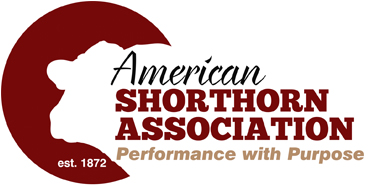Written by: Matt Woolfolk, Director of Performance Programs
The title of the article is always my opportunity to grab your attention, hoping you’ll read my monthly column. In this instance, I’m not worried about if you are listening to me, but rather the customers that show up to your farms and ranches to buy cattle. There’s one media publication that is trying to get the bull customer to talk about what they want, and their report gives us a chance to listen.
For the past six years, BEEF Magazine has put together a project titled The Seedstock 100. The project was printed in the January 2020 issue of BEEF Magazine. The Seedstock 100 sets out to identify those producers across the United States who merchandise the most bulls into the marketplace. This list of elite bull marketers ranges from selling 230 bulls in 2019 to almost 4,000 young sires, and can be found in 23 states coast to coast. Within the breeding programs of the Seedstock 100, there are 33 different breeds, composites, or hybrid breeds of cattle listed. Unfortunately, neither Shorthorn nor ShorthornPlus are included in those 33 bull breed types.
As part of their publishing of the Seedstock 100 list, BEEF also included some findings from a producer survey in regards to genetic makeup, purchasing demands, and management practices in their operations. The summary article compiled by BEEF writer Wes Ishmael was pretty enlightening. I encourage you to go read the whole report, if you can. While treating the responses to any survey as pure gospel is always a cautionary tale, it is still interesting to look at the responses from commercial producers in hopes of identifying a potential trend.
According to respondents to this survey, 72% of their cow herds were classified as mostly straightbred British or British crossbred females. From that subset of cattlemen, 97% of those straight and British crossbred cattle were classified as Angus (73%), Red Angus (15%) or Hereford (9%). When it comes to bull purchasing, the responses to this survey indicate that those same three breeds make up 84% of the bulls most recently purchased. Those same three breeds also dominate the responses for the breed of choice for bull purchases in the next three years. When asked if they planned to change the breed composition of their cow herd over the next five years, only 22% indicated that they were planning to do so. Eighty-five percent of responses indicated raising their own replacement females, while 68% market their feeder cattle at auction. In terms of retained ownership, 18% indicated that they keep ownership of their calves.
When it comes to data and information to make a bull buying decision, birth and calving ease information are most valued in this survey. Seventy eight percent want to know the actual birth weight of the calf, while more respondents want the EPD for Calving Ease Direct (77%) than they do Birth Weight (71%). Buyers prefer an actual weaning weight (63%) over a 205-day adjusted weight (55%), and 62% of buyers want access to a WW EPD. Albeit by a small margin, more responses indicated wanting a disposition score over a yearling weight (54% vs 51%). When it comes to the use of selection indexes, 56% of the respondents “routinely” use these tools to identify potential bulls to buy. In terms of priority of index type, maternal (44%) was the most popular, followed by end product/carcass (39%) and multipurpose (31%). Eighty-two percent of responses say that the information provided to them by the seedstock producer is understandable, while only 14% say that the information is too complicated. Only one in four responses indicated they needed a genomic profile on a bull, while 46% of responses use genomic data in their bull selection. That tells me that while they may not require the information, if genomic information is available, they are fairly likely to use it. As Wes Ishmael said himself in the article, “The idea that about half of bull buyers use genomic data in selection would have been unthinkable just a few years ago.”
While this is a lot of information to digest, I think it lends some wisdom on what the customer is thinking. Truthfully, I don’t agree with everything that we see in the results of this survey, but that’s just the number crunching side of me showing. However, if gaining commercial acceptance as a breed is an avenue we would like to pursue, I feel that knowing the mindset of the customer can help you get there. That is the reasoning behind ASA collecting data at NCBA Convention and in our own commercial survey. The dominance of British genetics is not a surprise, and certainly offers us a challenge as a British breed fighting in the 3% that the Big Three don’t occupy. However, with the survey indicating that one out of five cattlemen are looking to make changes to their herd’s genetic makeup, opportunity is available for a breed that offers unique, useful traits. With the increasing value being placed on docility (and Shorthorn’s natural propensity to for good docility), there might be an opening for the right kind of Shorthorn cattle to make a market impact. While nobody but your customer can tell you what the right kind of Shorthorn is, the responses to this survey show what type of information a bull buyer asks for and the type of cow herd most bulls are getting used in. Fortunately for you, being a part of the American Shorthorn Association offers you the opportunity to give them all the things they asked for through this BEEF Magazine survey.





![[ Random Image ]](/wp-content/themes/shorthorn/headers/header9.jpg)